WEAVING
Weaving is a method of textile production in which two distinct sets of yarns or threads are interlaced at right angles to form a fabric. Other methods are knitting, felting, and braiding or plaiting. The longitudinal threads are called the warp and the lateral threads are the weft or filling.
WOVEN
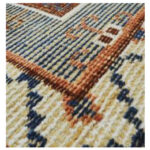 HAND KNOTTED
HAND KNOTTED
Rugs are the products of very high handcraft quality with this technique each knot forming the rug is tied by hand, one by one. There are different ways to make a knot in a rug, each one with its features and qualities. The knotting is one of the most important elements to estimate the quality of a rug, since the knot density is a quality indicator.
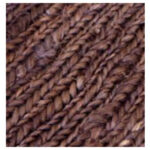 SUMAIK
SUMAIK
Sumaik is a type of brocading or flat woven pile. Thicker than Kilim, it is accomplished by looping the yarn horizontally around successive pairs of warps in between passes of over-under wefting. When compressed vertically with a weaver’s comb, the resultant texture looks like cabling rising slightly from the surface of the rug. Sumaik is named for the village of Shemaka in the Caucasus where this technique was widely practiced but it certainly was not invented there. Sumaik has been practiced extensively across the rug productions world, from Central Asia to Iran, the Caucasus and Turkey.
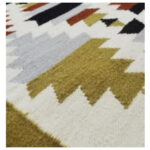 KILIM
KILIM
It consists of vertical warp combined purely with successive passes of horizontal wetting. If the wafting is compressed vertically with a weavers comb so as to cover the warps entirely, it produces ‘weft-faced’ tapestry. By manipulating the wefts in different colors, they can be made to produce the design of the kilim. When changes in color are accomplished by vertically successive rows of diverging wefts around two adjacent warps, this produces small gaps or slits-so-called slit tapestry technique. Alternatively the diverging wefts in different color may stagger back and forth vertically across two adjacent warps-so-called dovetail tapestry.
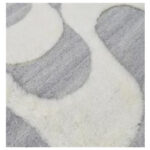 SHAGGY
SHAGGY
This rug has a very rich and long pile. Rugs made with this technique are very soft. The pile is left long and the knot density is low. The knot rows are followed by several passes of wetting which pass through the warps as a foundation, binding the rug together, and which also space out the rows of knots to keep them from becoming too dense.
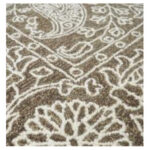 HAND TUFTED
HAND TUFTED
Hand Tufted rugs represent a very good alternative to hand knotted rugs, since the prices are less expensive, due to the simplicity of the manufacturing process nevertheless the quality remains very high, even if not comparable to the quality of a hand knotted rug, whose maintenance is easier, since they are washable with water and repairable. Also silk and viscose can be used, This technique has the pile inserted into a latex support using a tufting gun. At the beginning of the production the support is cut into the right shape and size and after this it is fixed on a working area. A drawing of the pattern is made and projected on the material to transfer the image. After the tufts of the chosen color are inserted, using the tufting gun, in the supporting material. Then a latex layer is applied to fix.
HANDLOOM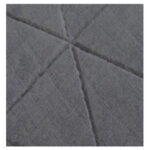
The handloom was devised about 2,000 years ago. The process consist of interlacing one set of threads of yarn (the warp) with another (the weft). The warp threads are stretched lengthwise in the weaving loom. The weft the cross-threads, are woven into the warp to make the rug. the earliest looms were wooden vertical-shaft looms, with the heddles fixed in place in the shaft. The warp threads pass alternately through a heddle and through a space between the heddles (the shed), so that raising the shaft raises half the threads (those passing through the heddles), and lowering the shaft lowers the same threads-the threads passing through the spaces between the heddles remain in place.
MAIN MATERIALS
WOOL
is the most common material used in the making rugs. We use New Zealand, Argentina, Semi Worsted & other wool for our rugs. We select only wool at highest quality standard which guarantee a high resistance and, thus a long durability. The best wool is the one with long fibers. The quality is achieved by brushing the sheets in winter and shearing them in spring. Before using it, it has to be carefully washed, in order to eliminate impurities: the better the cleaning the better the dyes are absorbed and the better are the colors.
VISCOSE
is a natural finer made of regenerated cellulose, as shiny as silk. It has a very soft touch.
HEMP
Hemp fibers are obtained by subjecting the stalks to a series of operations—including retting, drying and crushing — and a shaking process that completes separation form the woody portion, releasing the long, fairly straight fibre, or line. The finer is coarse and therefore it doesn’t absorb the dye homogeneously.
LINEN(FLAX)
Linen is composed for 70% by cellulose. it has a shiny appearance and a very smooth touch.
COTTON
Cotton is grown in most countries that manufacture carpets and is used mainly in the warp and weft. Cotton is the backbone of the CARPET.
